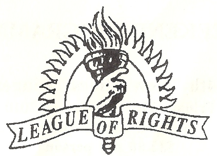Prepping in Australia: A Balanced Perspective, By John Steele
What is Prepping? Prepping, or preparedness, involves anticipating and actively preparing for significant disruptions, ranging from natural disasters to societal collapse. In Australia, prepping is less about militias and firearms, hallmarks of the U.S. prepper culture, and more about practical measures like stockpiling food, water, and tools to weather crises such as floods, bushfires, heatwaves, or supply-chain disruptions. The article by Tom Doig and Jordan McKenzie, published on September 5, 2025, in The Conversation, offers a balanced exploration of prepping in Australia, highlighting its diversity and cultural distinctions. Let's discuss it.
Key Characteristics of Australian Prepping
Diversity Across the Spectrum: Australian preppers span political and socioeconomic lines. They include:
•Climate-focused preppers, often Left-leaning, who prepare for escalating environmental crises like floods and bushfires.
•Conspiracy-driven preppers, influenced by anti-vaccination or anti-surveillance narratives. Like yours truly.
•Religious preppers, motivated by apocalyptic beliefs. Me too.
•Practical preppers, like Luis Merlo, a Brisbane welder, who focus on basic civil-defence measures after experiencing events like the 2009 floods.
Distinct from U.S. Prepping: Unlike the U.S., where prepping is tied to gun ownership and individual self-defence, Australian preppers emphasise community resilience and collaboration. The Australian People's Survival League, for instance, promotes prosocial behaviours over militarised responses, distancing itself from law-breaking or violence. Australia's strict gun laws (gun ownership is less than one-tenth of U.S. rates) shape a less weapon-centric approach.
Focus on "Slow Emergencies": Australian preppers are increasingly concerned with gradual, ongoing crises, climate change, supply-chain fragility, rather than sudden apocalyptic events. This aligns with broader societal anxieties about environmental and economic stability.
Preppers, Survivalists, and Sovereign Citizens: The article distinguishes between three overlapping, yet distinct groups:
•Preppers: Anticipate disruptions and prepare by stockpiling resources or building bunkers. They often see the state as incapable of providing protection during crises, not necessarily as an enemy. Preppers tend to "bug in" (stay put) rather than flee.
•Small -"S" Survivalists: Focus on bushcraft skills like shelter-building and foraging, akin to scouting or shows like Alone Australia. These practices are practical and non-ideological.
•Big-"S" Survivalists: A far-Right, anti-government ideology rooted in U.S. militia culture, viewing the state as a threat and prioritising armed self-defence.
•Sovereign Citizens: Reject the legitimacy of state laws, sometimes engaging in confrontational or violent acts against authorities. Their ideology, imported from the U.S., has grown in Australia since COVID. This only works if one has one's own army, and superior resources, which they don't. Thus incoherently, they expect the state to accept their arguments and "arrest' judges and politicians! Of course, this never works out for them, and how could it?
Cultural Context and Public Perception
•Numbers and Secrecy: Estimating prepper numbers is challenging due to our secretive nature and the lack of quantitative studies. The Australian Preppers Facebook group has 40,500 members, while a "no conspiracies" group has 10,900. Roughly 10% of Australians engage in basic disaster preparedness, but fully committed preppers are likely a smaller subset.
•Community vs. Confrontation: Australian preppers often reject U.S.-style narratives of urban chaos or armed uprisings, which feel disconnected from Australia's reality of rare riots and shootings. Instead, they focus on communal resilience, as seen in groups like the Australian People's Survival League.
Why It Matters: The article marks a shift in how prepping is discussed, moving away from caricatures of paranoia to a more nuanced view. Prepping in Australia reflects broader anxieties about climate change, economic instability, and state capacity, but it also highlights opportunities for resilience and solidarity. The authors suggest that prepping is becoming more mainstream, as ordinary households stockpile supplies or build community networks to face "slow emergencies."
Reflection: This account stands out for its fairness, acknowledging the diversity of preppers, Left, Right, or apolitical, and their practical motivations. It challenges the sensationalised image of preppers as gun-toting extremists, emphasising Australia's unique context. As economic uncertainties grow from mass immigration and other invasions, prepping may increasingly blend into everyday preparedness, reflecting a pragmatic response to an uncertain future.
https://theconversation.com/what-is-prepping-and-how-does-it-work-in-australia-264481

